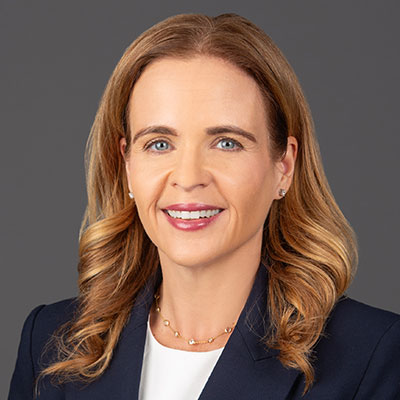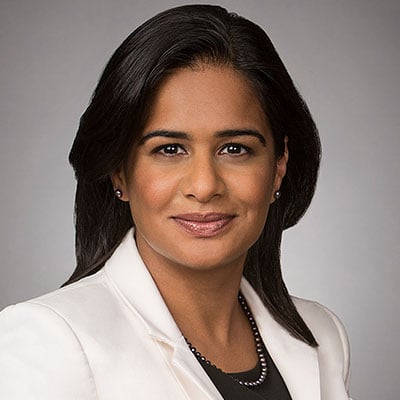SEC Increases Burden of Private Fund Adviser Reporting on Form PF
The SEC adopted additional amendments1 to Form PF2 on February 8, 2024, which apply to SEC-registered private fund advisers.3 Upon their effectiveness, the primary changes to Form PF for private equity fund advisers4 include:
- separate reporting for each private fund in “master-feeder fund arrangements” or “parallel fund structures,” and aggregated reporting for “parallel managed accounts” relating to each reporting fund; and
- expansions and/or modifications to information currently required to be reported about private fund advisers and funds, including with respect to fund profile/type, breakdown of fund asset values, fund inflows and outflows, fund base currency, fund creditors, fund beneficial owners, and performance (as further discussed below).
The amendments contain a large number of additional requirements applicable only to certain hedge fund advisers and hedge funds.5
These amendments will apply to the annual Form PF filings for advisers with a December fiscal year-end due in April 2025.6 Form PF filings are not public.
Reporting Master-Feeder Arrangements and Parallel Fund Structures
Currently, advisers are permitted to report master-feeder funds and parallel funds either in the aggregate or separately, and most advisers choose to take an approach that is consistent with their internal reporting and recordkeeping. The amendments will require reporting of “master-feeder arrangements”7 and “parallel fund structures”8 on a disaggregated basis (except for “disregarded feeder funds,”9 which may still be reported on an aggregated basis with their master fund). Therefore, advisers with traditional master-feeder arrangements should be able to continue to report such arrangements on an aggregate basis.10 A feeder fund that is reporting separately must disregard its holdings in the master fund’s equity when determining its reporting category, which avoids a double counting of reported assets. However, for determining whether an adviser meets a reporting threshold (e.g., as a large private equity fund adviser), the adviser will need to continue to aggregate master-feeder arrangements and parallel fund structures, respectively.
In contrast, the amendments eliminate the option to separately report any “parallel managed accounts” 11 (distinct from “parallel fund structures”). Instead, the amended Form PF will require advisers to report the combined value of all parallel managed accounts relating to each reporting fund.12
Changes to Reporting Other Information About the Adviser and Its Private Funds
Amended Form PF also includes various updates and/or expansions of items covering the following “basic information:”
- Fund Profile. Advisers will be required to identify the type/strategy of each reporting fund (e.g., private equity fund), and to indicate whether each reporting fund is an “open-end private fund”13 or “closed-end private fund.”14
- Assets Under Management. For purposes of reporting assets under management attributable to certain private funds, advisers will be required to exclude the value of private funds’ investments in other internal private funds to avoid double counting of assets.
- Unfunded Commitments. Advisers will be required to report separately the value of unfunded commitments that are currently included in each fund’s reported net and gross asset values.
- Inflows and Outflows. Advisers will be required to report all new capital contributions (since the prior report) from investors and exclude contributions of committed capital that were already included in the reporting fund’s gross asset value. Therefore, to the extent an adviser has already reported an investor’s capital commitment to a fund in the fund’s gross asset value, the adviser would not have to report any additional information when the investor contributes capital pursuant to that commitment. Advisers also will be required to report any investor withdrawals, redemptions or other distributions of any kind.
- Base Currency. Advisers will be required to identify the base currency of all reporting funds.
- Creditors. In addition to the value of the reporting fund’s borrowings and types of creditors, advisers will be required to indicate whether a creditor is based in the U.S. and whether it is a U.S. depository institution (rather than a U.S. financial institution as currently required).
- Fair Values. Advisers will be required to indicate the date on which assets were categorized by fair value (e.g., prior year or current as of the date of report), and to separately report cash and cash equivalents (which excludes digital assets).
- Fund Investor Information. Advisers will be required to report more granular information about beneficial ownership of the fund, including (1) whether beneficial owners that are broker-dealers, insurance companies, nonprofit organizations, pension plans, banking or thrift institutions are U.S. persons or non-U.S. persons, (2) whether beneficial owners that are private funds are either internal private funds or external private funds; (3) a description of any investors included in the “other” category and why such investors would not qualify for any of the other categories.
- Fund Performance. Advisers will be required to report performance as a money-weighted internal rate of return (“IRR”) if the reporting fund’s performance is reported as an IRR since inception, which is consistent with the way most advisers to private illiquid funds currently report IRR. In addition, performance will need to be reported using the reporting fund’s base currency. The Form requires advisers to report the performance that they provide to investors, counterparties or otherwise (or the most representative set of performance if the adviser reports different fund performance results to different groups, with an explanation of its selection). This provides some flexibility to advisers in reporting performance in the amended Form PF, particularly in light of the possibility of differences between the presentation of returns for purposes of the Advisers Act Marketing Rule and quarterly investor reporting under the recently adopted Private Fund Adviser Rules.15 In a change from the proposal, the adopted amendments require advisers to indicate whether the reported IRR includes or does not include the impact of subscription facilities, but does not prescribe an approach.
In light of these amendments, advisers should plan for how they will collect, organize and report information in advance of the compliance date, particularly for questions with a new format.16
Please contact the Kirkland regulatory attorneys with whom you regularly work if you have questions regarding these amendments.
1. These amendments were jointly adopted by the CFTC and also apply to CFTC-registered commodity pool operators and commodity trading advisors. ↩
2. The Adopting Release is available through this link, and the Fact Sheet summarizing the Form PF amendments is available through this link. ↩
3. These amendments follow amendments to Form PF that were adopted in May 2023 (the “Prior Amendments”). The Prior Amendments included requirements for large private equity fund advisers (those with at least $2 billion of private equity assets under management) to file quarterly event-based reports for adviser-led secondary transactions or actions taken by investors to remove a fund’s GP, terminate a fund’s investment period or terminate a fund. The Prior Amendments’ event-based reporting requirements are already effective (other of the Prior Amendments will not affect the annual Form PF filings for large private equity fund advisers with a December fiscal year end until Form PF filings due in 2025), and are summarized in our previous Kirkland AIM available through this link. ↩
4. As discussed further herein, the Form PF definition is broad enough to pick up many real estate fund and private credit fund advisers. ↩
5. The amendments applicable to “large hedge fund advisers,” “hedge funds” and “qualifying hedge funds” (each as defined in Form PF) introduce extra reporting requirements in Form PF, including regarding investment strategies, investment exposures, borrowing and counterparty exposures, market factor effects, currency exposures, turnover, country and industry exposures, central clearing counterparty reporting, risk metrics, investment performance by strategy, portfolio liquidity, financing and investor liquidity, and trading and clearing mechanisms. ↩
6. For advisers with a fiscal year end other than December 31, the amendments take effect one year from February 2024 for Form PF filings made after such date. ↩
7. A “master-feeder arrangement” is an arrangement in which one or more funds (“feeder funds”) invest all or substantially all of their assets in a single private fund (“master fund”). ↩
8. A “parallel fund structure” is a structure in which one or more private funds pursues substantially the same investment objective and strategy and invests side-by-side in substantially the same positions as another private fund. ↩
9. A “disregarded feeder fund” is a feeder fund that invests all of its assets in a single master fund, U.S. Treasury bills, and/or cash and cash equivalents. ↩
10. If disregarded feeder funds are reported on an aggregate basis, advisers will still need to identify the disregarded feeder fund and “look through” to such feeder fund’s investors in responding to certain questions regarding master fund investors. ↩
11. A “parallel managed account” is any managed account or other pool of assets managed by the adviser that pursues substantially the same investment objective and strategy and invests side by side in substantially the same positions as the identified private fund. ↩
12. In addition, in an effort to collect data impacted by “fund of funds” arrangements in a more consistent manner, the amended Form PF will require an adviser to include the value of a reporting fund’s investments in other private funds (including internal and external private funds) when responding to questions on Form PF, unless otherwise directed by the instructions to a particular question. In a modification from the proposed amendment, advisers will be required to include the value of investments in other private funds (including internal and external private funds) for purposes of determining whether the adviser is required to file Form PF or meet reporting thresholds (e.g., as a large private equity fund adviser). ↩
13. An “open-end private fund” is any private fund that offers redemption rights to its investors in the ordinary course, which may be paid in cash or in kind, irrespective of redemption frequency or notice periods and without regard to any suspensions, gates, lock-ups or side pockets that may be employed by the fund. This would include most hedge funds and open-end real estate funds. Note that an adviser may also indicate that the reporting fund is neither an open-end private fund nor a closed-end private fund, but will be required to provide a detailed explanation. ↩
14. A “closed-end private fund” is any private fund that only issues securities, the terms of which do not provide a holder with any right, except in extraordinary circumstances, to withdraw, redeem or require the repurchase of such securities, but which may entitle holders to receive distributions made to all holders pro rata. This would include most private equity, credit and real estate funds (other than open-end real estate funds). ↩
15. These quarterly reporting rules are not effective until the first quarter of 2025, requiring such reports to be sent to investors by May 15, 2025. Our Kirkland AIM on the private fund adviser rules is available through this link. Recent SEC guidance on net IRRs under the Marketing Rules is described in our prior Kirkland AIMs, available here and here. ↩
16. For example, subscription booklet questions that ask about investor entity types will need to be amended to match the requirements of the amended Form PF. ↩




















